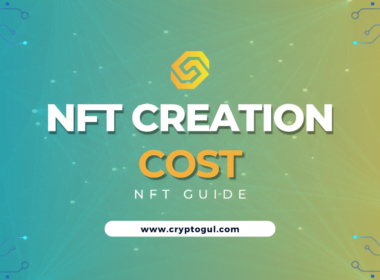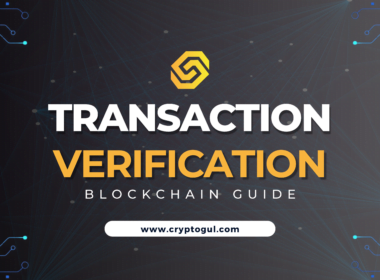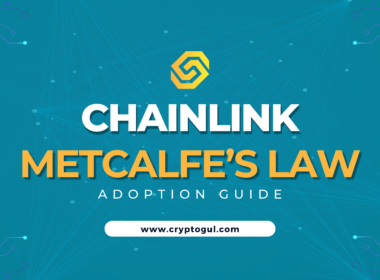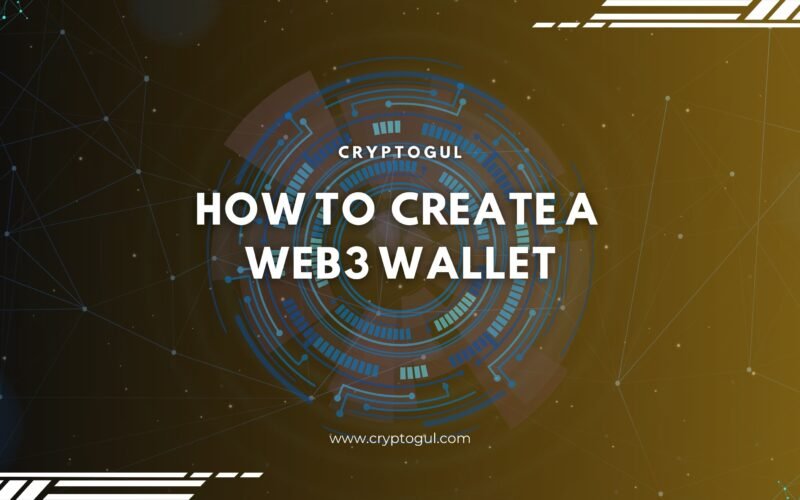In recent years, the art world has been abuzz with a new player in the game – Non-Fungible Tokens (NFTs).
While they have opened up unprecedented opportunities for digital artists, they have also brought along a series of concerns.
In this article, we delve deep into the 10 reasons why NFTs might be bad for artists, drawing insights from industry experts and real experiences of artists.
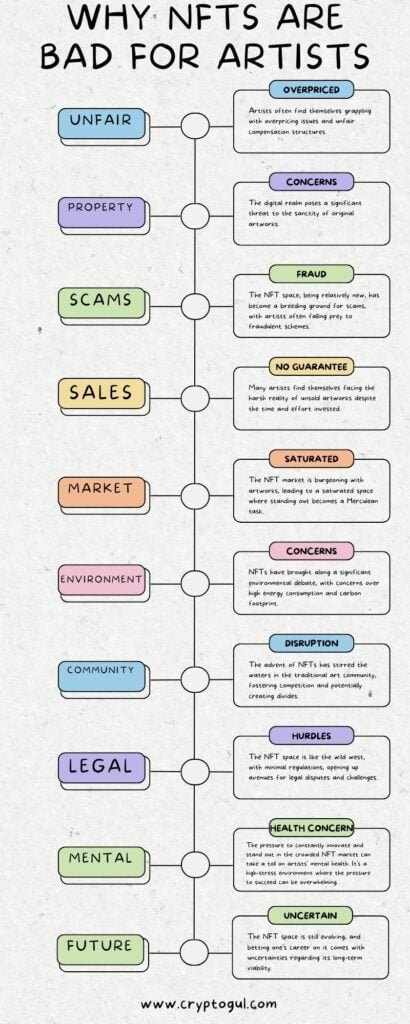
1. Overpricing and Unfair Compensation
The NFT market has seen artworks being sold for millions, but not all that glitters is gold. Artists often find themselves grappling with overpricing issues and unfair compensation structures. Let’s delve deeper:
- Hefty Platform Fees: Artists often end up receiving just a fraction of the earnings due to high platform fees.
- Lack of Royalties: After the initial sale, artists do not receive royalties, potentially undervaluing their work in the long run.
- Unpredictable Market: The volatile nature of the NFT market can sometimes result in undervaluation of artworks.
2. Intellectual Property Concerns
When artists venture into the NFT space, they often find themselves entangled in a web of intellectual property concerns. The digital realm poses a significant threat to the sanctity of original artworks. Here are the pressing issues:
- Plagiarism: Artists face the risk of their work being plagiarized, with no stringent regulations in place to protect them.
- Misuse of Art: Once sold, the art can be used for various purposes without the artist’s consent, sometimes even for unethical campaigns.
- Loss of Artistic Control: Artists may lose control over the narrative surrounding their art, as buyers gain substantial rights over the purchased NFTs.
3. Scams
The NFT space, being relatively new, has become a breeding ground for scams, with artists often falling prey to fraudulent schemes. It is essential to be aware of the various scams that are prevalent in the space:
- Phishing Scams: Artists may encounter scams where they are tricked into providing sensitive information.
- Fake Listings: Scammers often create fake listings to deceive buyers and sellers.
- Rug Pulls: This involves scammers abruptly removing their artworks from the marketplace after selling, leaving buyers with worthless assets.
4. No Guarantee of Sale
Entering the NFT market doesn’t guarantee a successful sale. Many artists find themselves facing the harsh reality of unsold artworks despite the time and effort invested. Understanding this aspect is crucial:
- Unsold Work: Many pieces remain unsold, leading to financial instability and disappointment.
- Market Dynamics: The fluctuating market dynamics can make it challenging to secure a sale, with trends changing rapidly.
- High Competition: With a surge in the number of artists entering the NFT space, the competition is fiercer than ever.

The overall breakdown, Kim Parker wrote:
33.6% of primary sales were $100 or less
20.0% of primary sales were $100-$200
11.1 % of primary sales were $200-$300
7.7 % of primary sales were $300-$400
3.9 % of primary sales were $400–$500
3.3 % of primary sales were $500-$600
2.5 % of primary sales were $600–$700
5. Market Saturation
The NFT market is burgeoning with artworks, leading to a saturated space where standing out becomes a Herculean task. Here we dissect the challenges artists face due to market saturation:
- Visibility: Gaining visibility is a steep hill to climb for new artists.
- Quality Concerns: For buyers, finding quality art amidst a sea of options becomes increasingly difficult.
- Originality: With a saturated market, artists often find it challenging to offer something unique and original.

6. Environmental Concerns
NFTs have brought along a significant environmental debate, with concerns over high energy consumption and carbon footprint. Let’s delve deeper into the environmental repercussions:
- High Energy Consumption: The blockchain networks associated with NFTs consume a high amount of energy.
- Sustainability Issues: Artists advocating for environmental sustainability find it hard to reconcile with the carbon footprint of NFTs.
- Negative Public Perception: The environmental concerns have led to a negative perception of NFTs, with artists facing backlash for participating in the NFT space.
7. Community Disruption
The advent of NFTs has stirred the waters in the traditional art community, fostering competition and potentially creating divides. Here we explore the impact on the community:
- Competition Over Collaboration: The influx of NFTs has fostered a competitive environment, overshadowing the spirit of collaboration.
- Community Reaction: Traditional art communities may view NFT artists differently, creating a divide.
- Isolation: Artists focusing solely on NFTs might find themselves isolated from broader artistic circles, missing out on collaborative opportunities.
8. Legal and Regulatory Hurdles
The NFT space is like the wild west, with minimal regulations, opening up avenues for legal disputes and challenges. Let’s understand the legal intricacies involved:
- Legal Disputes: Artists often find themselves embroiled in legal disputes over copyright and intellectual property rights.
- Regulatory Challenges: The lack of clear regulations can lead to unforeseen challenges, including potential fraud.
- Tax Implications: Artists need to navigate complex tax landscapes, which can be daunting, especially for newcomers.
The Stoner Cats NFTs, associated with a cartoon including the voice talent of Mila Kunis and Ashton Kutcher, were actually unregistered securities, the Securities and Exchange Commission said today.
https://www.theverge.com/2023/9/13/23872048/stoner-cats-nft-sec-mila-kunis-ashton-kutcher
9. Mental Health Concerns
The pressure to constantly innovate and stand out in the crowded NFT market can take a toll on artists’ mental health. It’s a high-stress environment where the pressure to succeed can be overwhelming. Let’s explore the mental health concerns in depth:
- Pressure to Innovate: Artists face immense pressure to constantly create unique and groundbreaking work.
- Market Stress: The fluctuating market dynamics add stress and uncertainty, affecting artists’ peace of mind.
- Burnout: The relentless pace of the NFT world can lead to burnout, with artists feeling exhausted and drained.
10. Uncertain Future
The NFT space is still evolving, and betting one’s career on it comes with uncertainties regarding its long-term viability. Artists venturing into this space must brace themselves for a journey into the unknown. Here we discuss the uncertainties that loom large:
- Market Volatility: The NFT market is known for its volatility, with prices swinging wildly within short periods.
- Career Risk: Building a career in a space that is still finding its footing can be a risky endeavor.
- Technological Changes: The rapid pace of technological advancements means that today’s hot trends can quickly become obsolete, posing a risk to artists who have invested time and resources in current technologies.
Conclusion
While NFTs have revolutionized the art world to some extent, they come with a baggage of concerns that artists should be wary of.
As we navigate this dynamic landscape, it remains imperative to weigh the pros and cons meticulously before taking the plunge.
It is a vibrant yet challenging frontier, offering both unprecedented opportunities and potential pitfalls.


